Art World
Ahead of Mother’s Day, See Some of the Most Tender Depictions of Mothers and Children Throughout Art History
From Gustav Klimt to Alice Neel, artists have long focused on the subject of mothers.
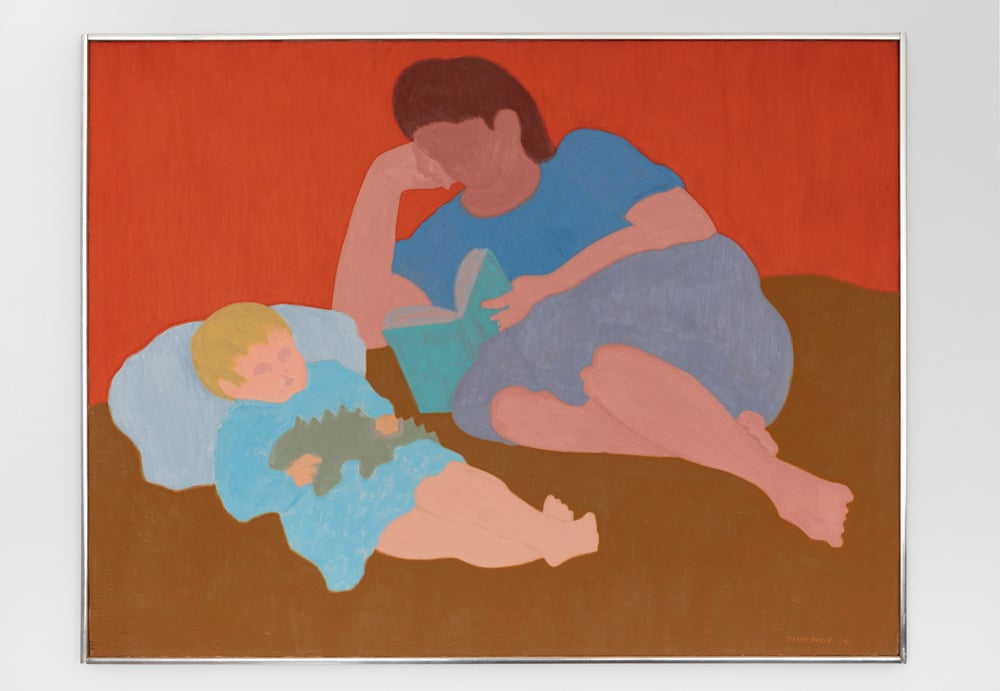
From Gustav Klimt to Alice Neel, artists have long focused on the subject of mothers.

Caroline Goldstein &
Katie White

There’s an old saying that goes, “If it’s not one thing, it’s your mother.” Poking fun at the sometimes overbearing nature of mother figures, the maxim highlights a universal truth: that life-giving often means succumbing to a future fraught with complicated emotions and worry.
And while mothers bear this responsibility and burden with a great deal of courage, if they’re especially lucky, they may be paid back with love, affection, and gifts when their offspring grow up—or, better yet, be portrayed in a work of art for all the world to see.
Indeed, mothers have always made wonderful subjects for artists, who have long explored the space between their roles as individuals and as caregivers. Just ahead of Mother’s Day, we’ve rounded up eight famous artworks that beautifully depict the bond between mother and child.
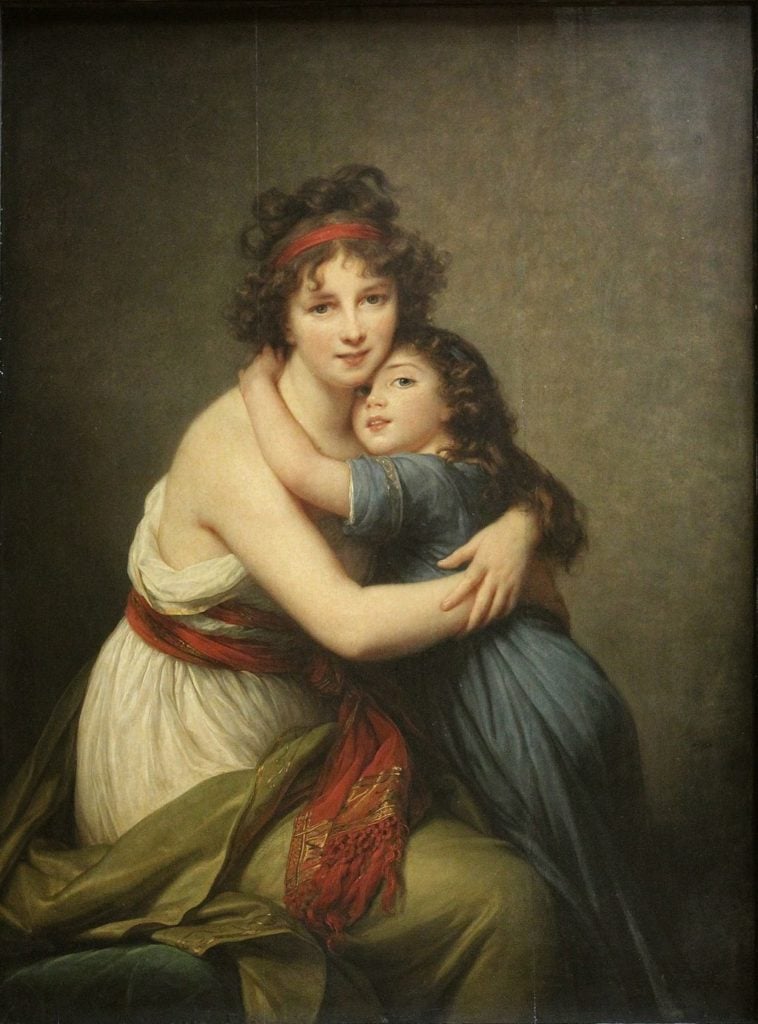
Elisabeth Louise Vigée Le Brun, Self-Portrait with Her Daughter, Julie (1780–1819). Courtesy of Wikimedia Commons.
Neo-Classical French painter Elisabeth Louise Vigée Le Brun was the beloved royal portraitist of Marie Antoinette and created history’s most enduring images of the infamous French queen (including a tender portrait with her children). Le Brun was also a mother herself—she had one daughter, Julie, whom she adored, and frequently used as a model. Here, she portrays them both in a warm embrace, with Julie’s face partially nestled into the crook of her neck. Le Brun’s toga-like drapery harkens to the popular à la Grecque style of the age, which drew inspiration from the artwork of the ancient world. Nevertheless, through her depiction of a blank background, she reminds her viewers that she is an artist at work in her studio with a very contemporary child.
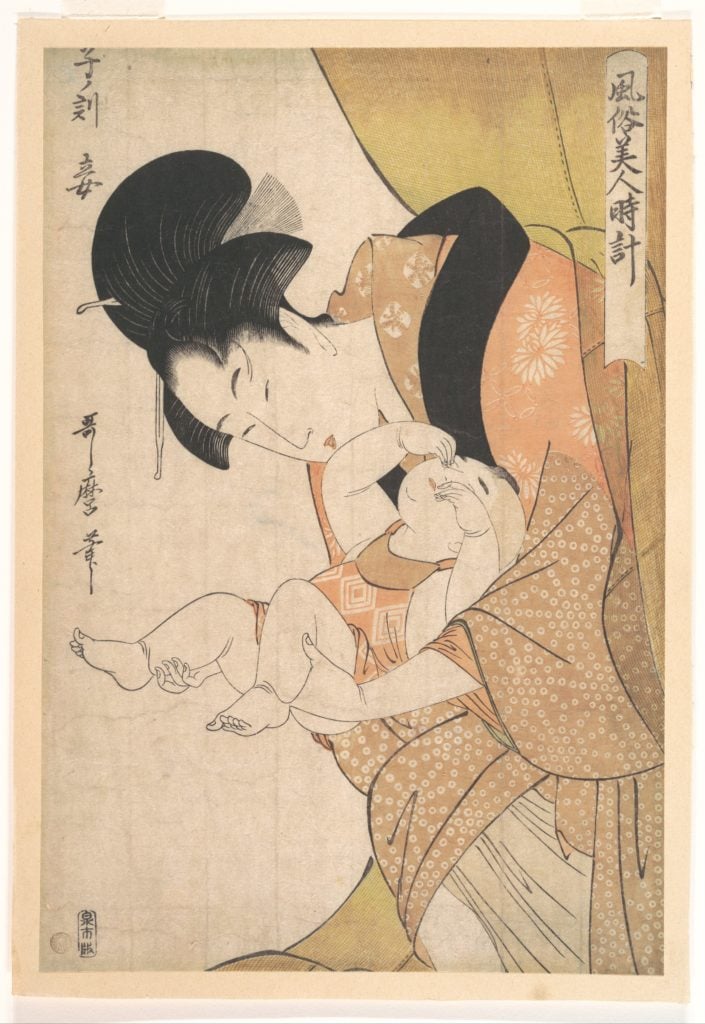
Kitagawa Utamaro, Midnight: Mother and Sleepy Child (1790). Courtesy of the Metropolitan Museum.
One of the leading artists of Edo-era Japan, Kitagawa Utamaro was lauded for his tender depictions of beautiful women and his talent for capturing quiet moments between mother and child. In this nighttime scene, a woman emerges from the mosquito net that would surround her bed and attends to her baby, who is sleepily rubbing his eyes. These tender moments of daily life were of particular interest to the Edo-era artists, and their work would prove deeply influential to the European Impressionists later on.
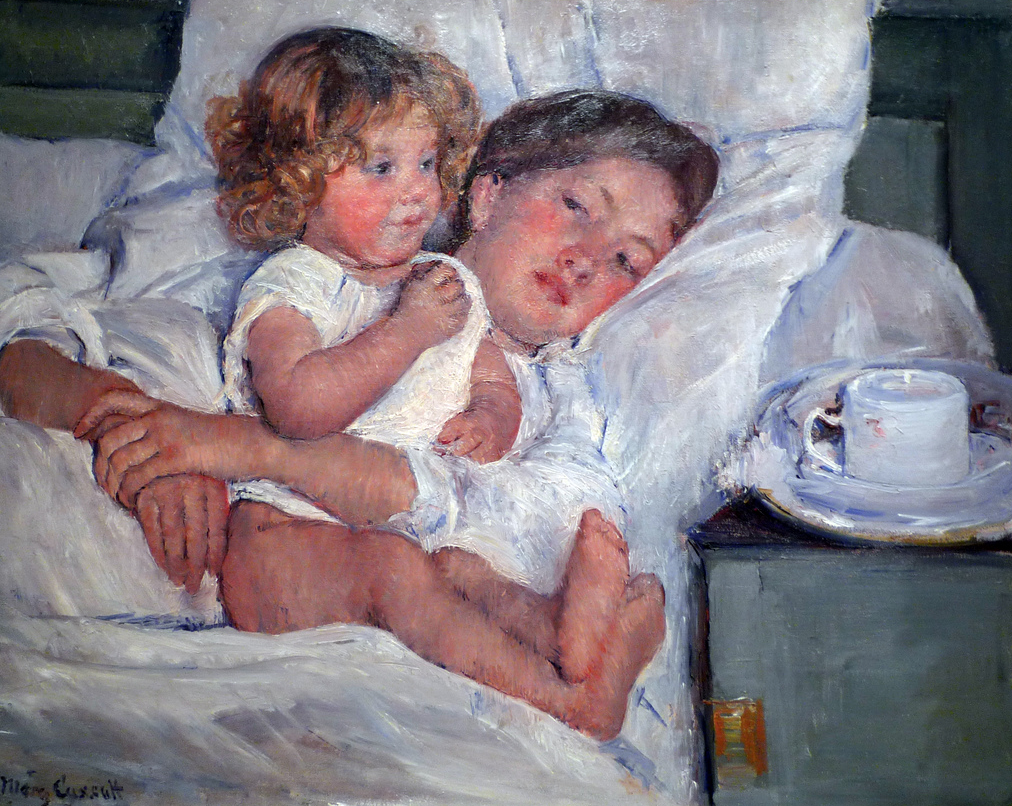
Mary Cassatt, Breakfast in Bed (1897). Courtesy of the Norton Simon Museum.
The Impressionists were enthralled by the quotidian coming-and-goings of bourgeois life. For Manet, Degas, Renoir, and the other male artists of that period, city streets, the ballet, cafe settings, and horse races collectively served as fruitful ground for their creations. But for women Impressionists, the domestic interior, and the life of the mother—worlds into which their male counterparts had no access—became their subject matter. American-born, French artist Mary Cassatt was most famed for her many images of mothers and children. In this particular work, a young mother, seemingly lost in thought, holds up her rosy-cheeked child, as they rest, floating on white clouds of pillows and blankets.
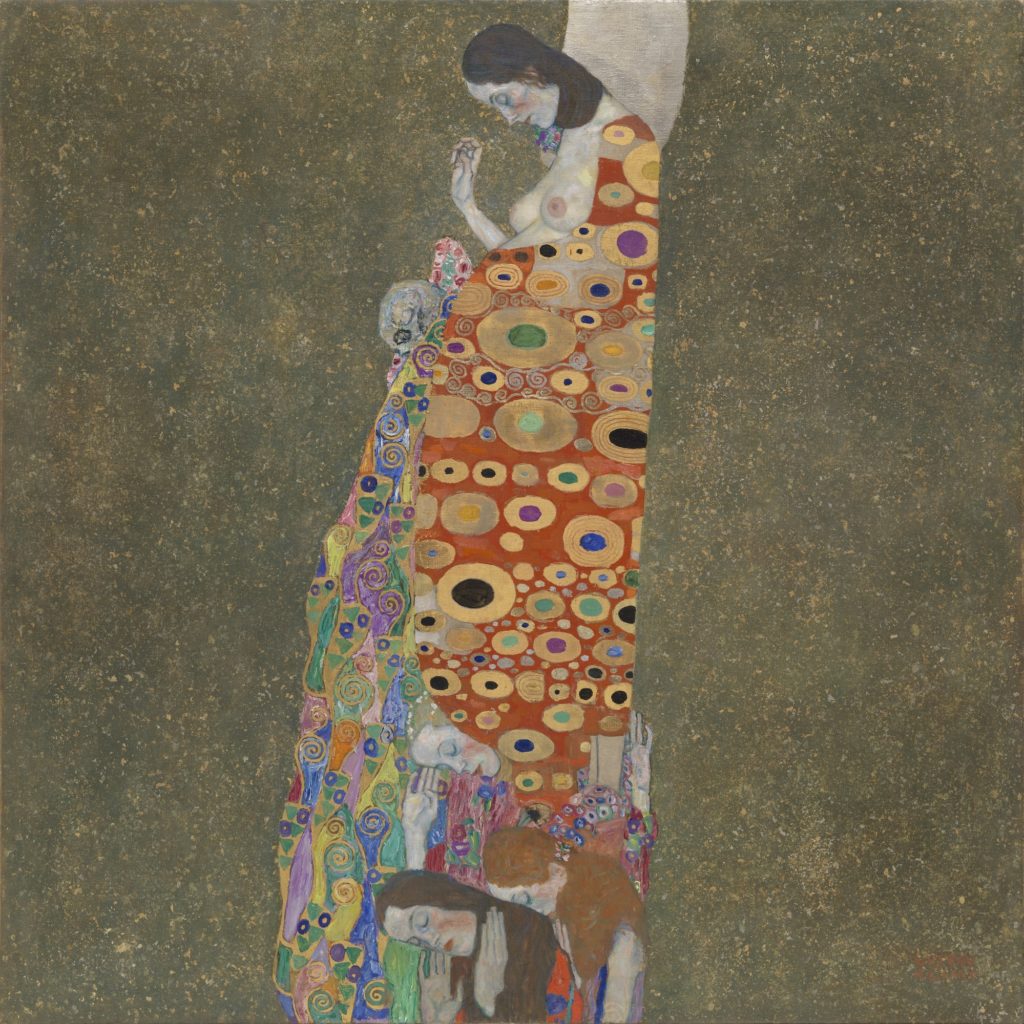
Gustav Klimt, Hope II (1907-08). Courtesy of the Museum of Modern Art.
The Austrian artist Gustav Klimt was one of seven children, and he himself is said to have fathered at least 14 of his own, so he was no stranger to the intimacy of parenthood. The painting, titled Hope II, was the second of his works to focus on a pregnant woman, which at the time was still uncommon, and not entirely welcome. Here, we see a woman swathed in a patterned garment, enveloping several other women kneeling at her feet with their heads bowed solemnly. In the early 20th century, pregnancies were especially precarious, and complications common.
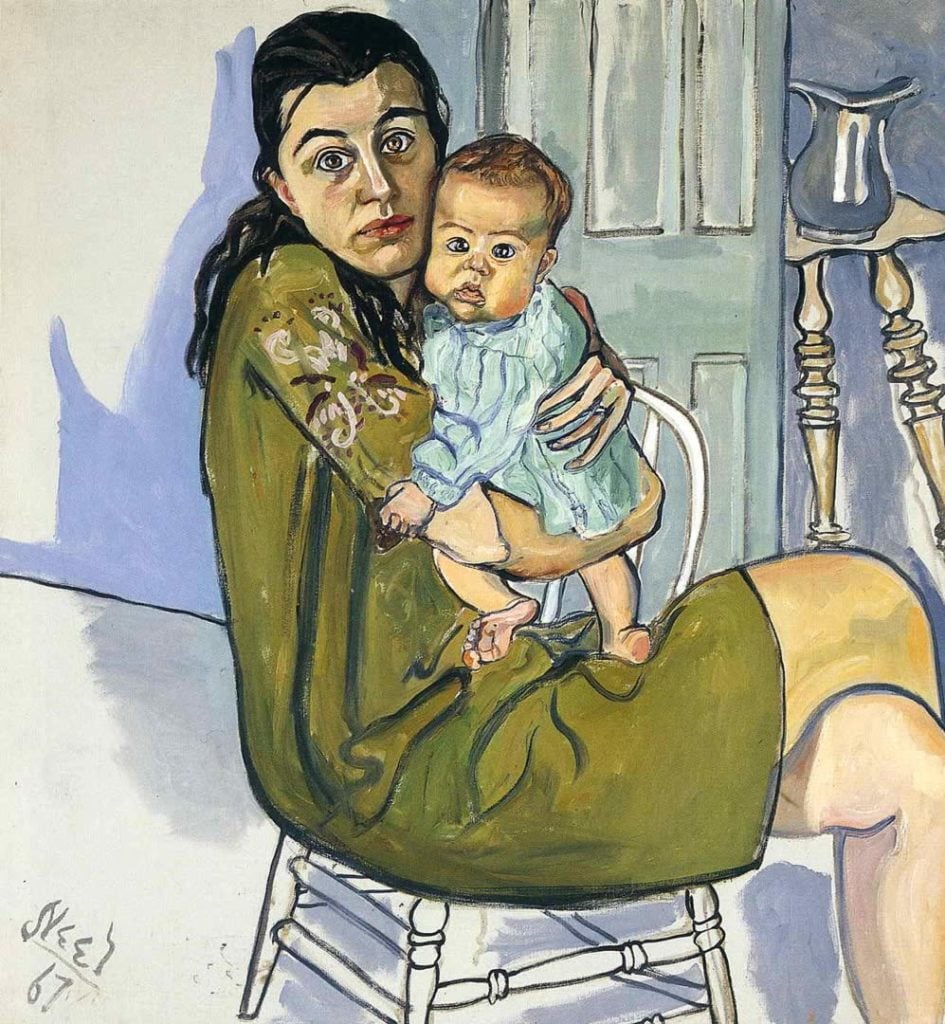
Alice Neel, Mother and Child (Nancy and Olivia) (1967). Courtesy of Artnet.
Lauded as one of the great portraitists of modern painting, Alice Neel struggled in her personal life greatly. Her first child died from diphtheria, and though the trauma lasted through her life, permeating her work, she became more invested in depicting portraits of her remaining family and friends. In this image, we see Neel’s daughter-in-law Nancy, a new mother to her own daughter Olivia, Neel’s first grandchild. The tenderness of Neel’s work is balanced by her obvious pride in Nancy’s courage and strength as a new mother—Neel was an advocate for women as individuals, and the heroics of early motherhood, which she surely knew herself, are evident in this painting.
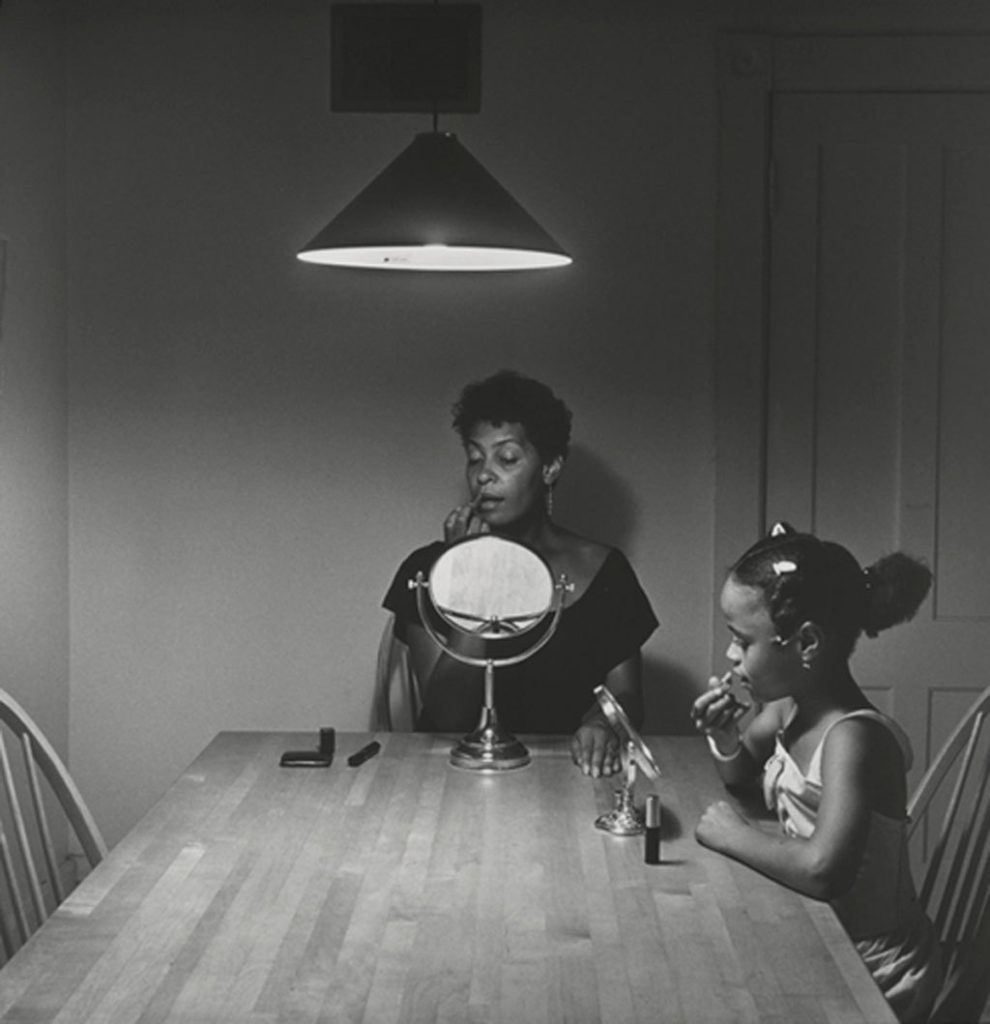
Carrie Mae Weems, Untitled (Woman and daughter with makeup) from Kitchen Table Series (1990). Image courtesy of Phillips London.
In the late 1980s, while living in Northampton, Massachusetts, the young Carrie Mae Weems began to stage photographs of herself at the kitchen table playing a character of a woman with a complex life—as lover, friend, and mother. The work would become her seminal “Kitchen Table” series, revered today as an important touchstone in the self-representation of black womanhood. Among the most poignant moments in the series is the image of Weems’s character and her daughter applying makeup together at the kitchen table—an act of bonding, and theatrical disguise, shared by women across generations.
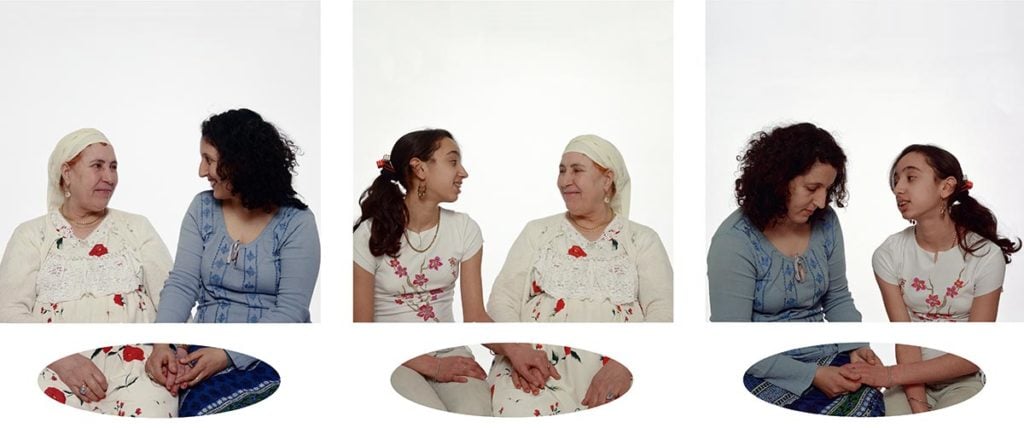
Zenib Sedira, Mother, Daughter and I (2003). © Zineb Sedira / DACS, London. Courtesy the artist and kamel mennour, Paris.
Born in Paris in 1963 to parents who emigrated from Algeria, just before the country won independence from France, Zenib Sedira’s practice has long explored issues of identity, politics, and racism. She often uses her parents as direct subjects to help her come to terms with her own place in the world. “How do you tell your identity when your identity is quite complex, perhaps painful at times, but also very rich?” she once mused in an interview, adding that her work seeks to answer that very question. In Mother, Daughter, and I, Sedira acts an interpreter between her elderly mother and her young daughter, contemplating the multigenerational relationships that, although sometimes riddled with miscommunication, are all fluent in the language of family ties. Sedira will be the first artist of Algerian descent to represent France at the Venice Biennale in 2021.
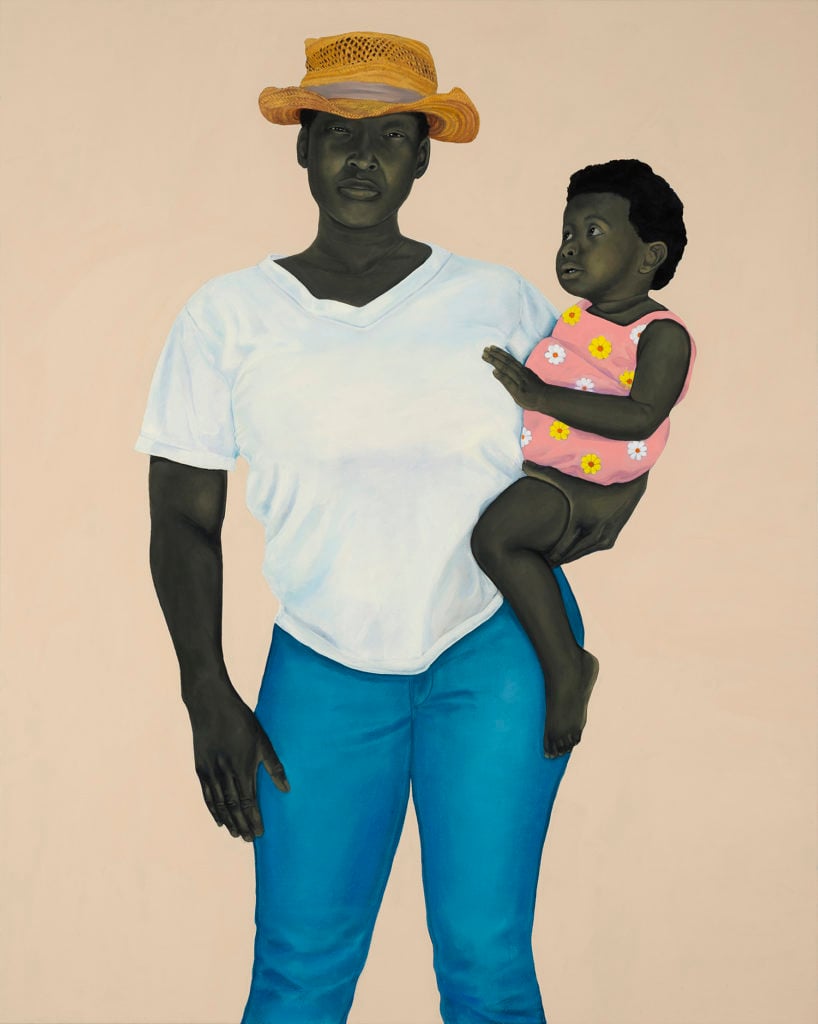
Amy Sherald, Mother and Child (2016). Courtesy of the artist and Hauser & Wirth, ©Amy Sherald.
When Amy Sherald was selected as the official portraitist for Michelle Obama in 2018, she was catapulted to superstardom from her humble beginnings in Baltimore, Maryland. “I’m painting the paintings that I want to see in museums,” Sherald said of her stirring, larger-than-life works. In this painting, Mother and Child, the traditional pose of Madonna and child has been reframed for a contemporary context, with a young girl hoisted up onto her mother’s denim-clad hip. She looks amorously at her protector, while the elder woman stands tall, her broad shoulders back, and her gaze firmly on the viewer.